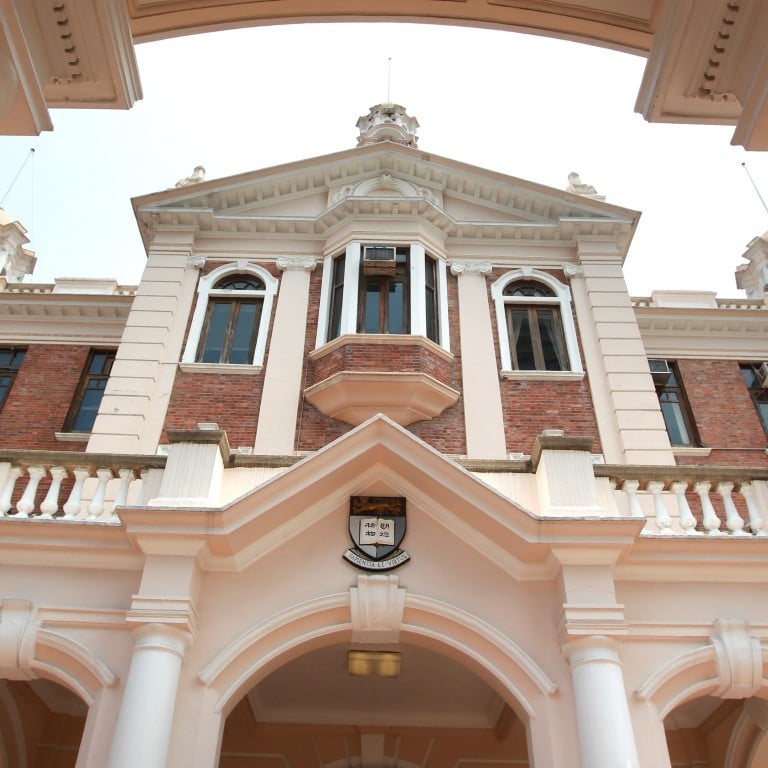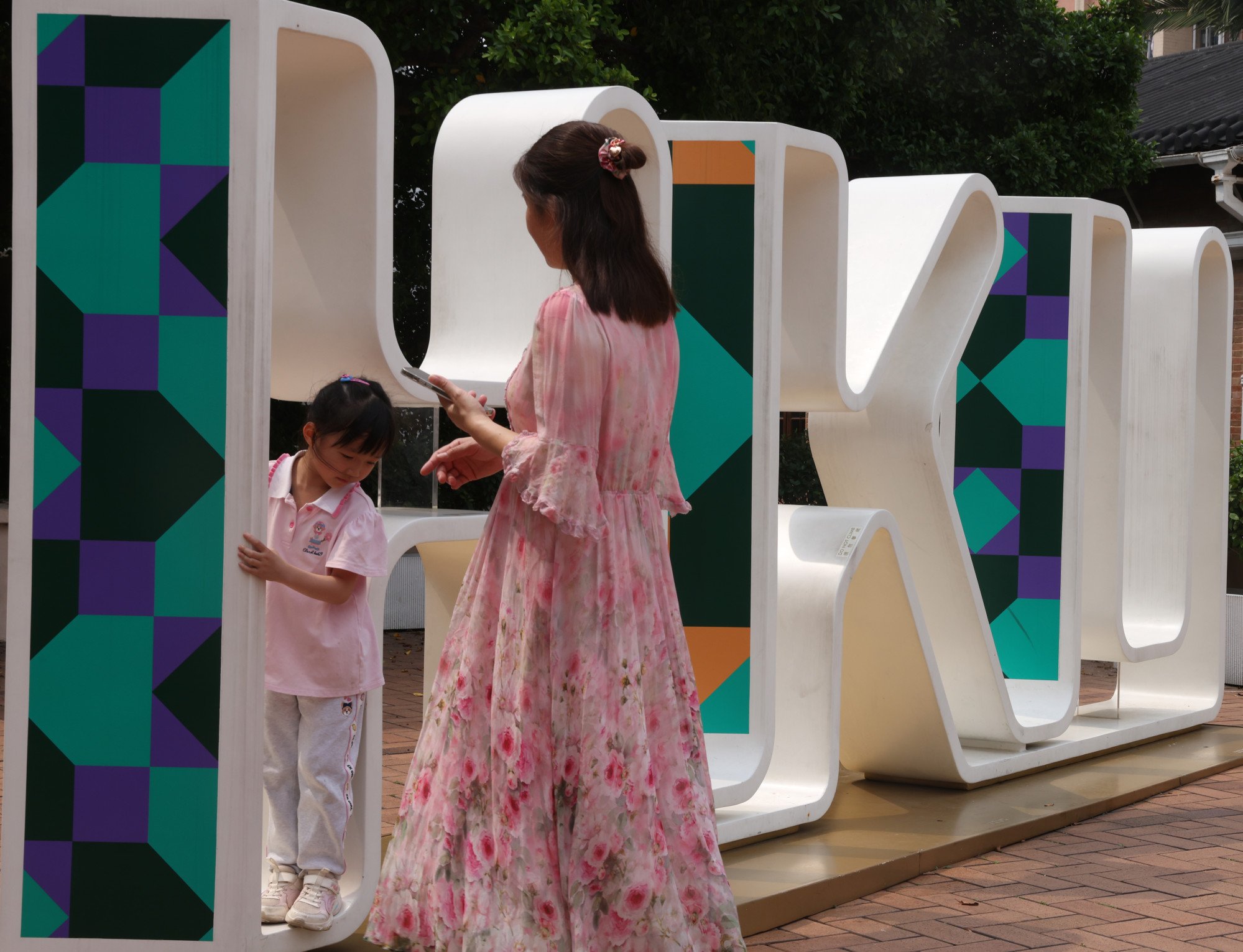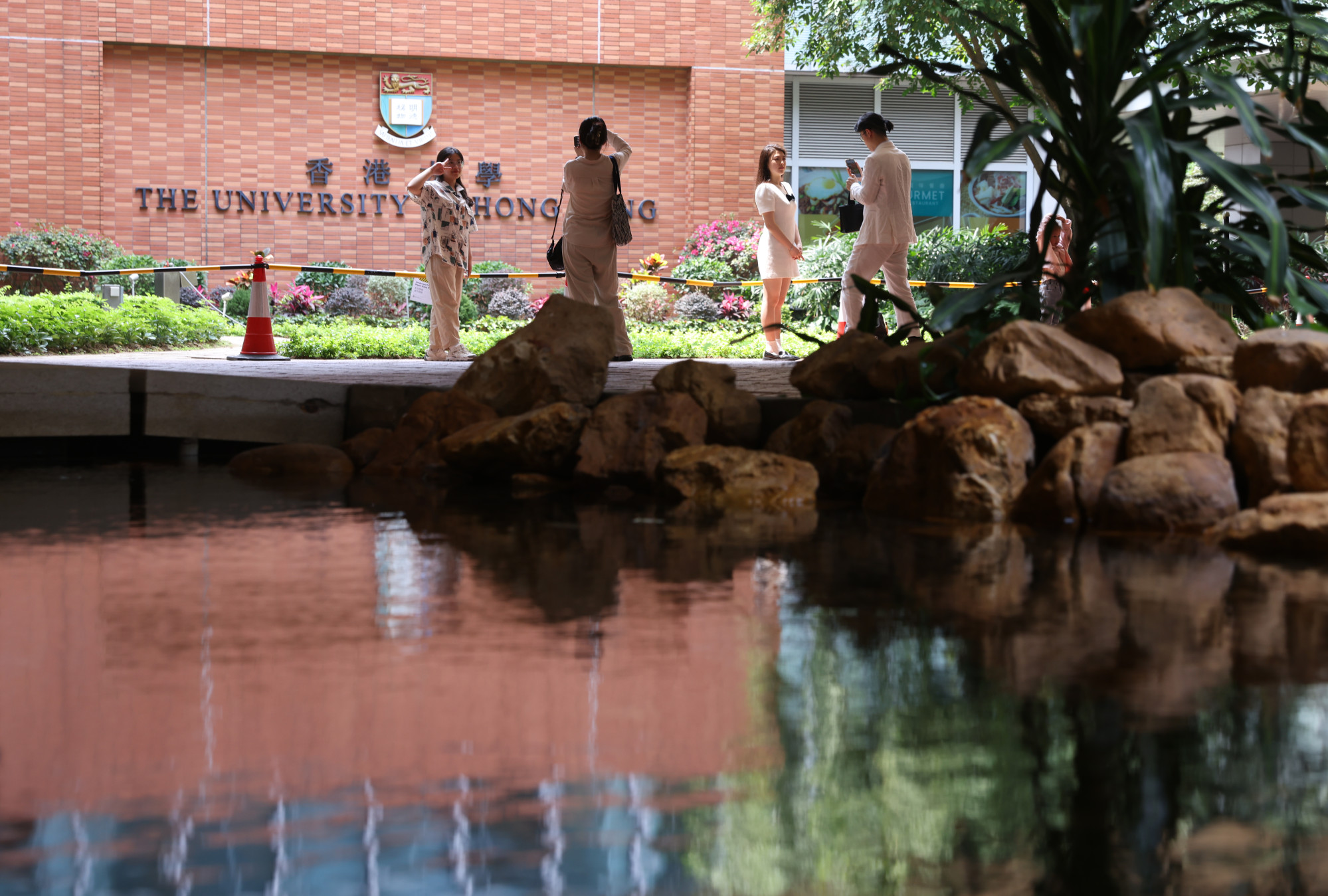
University of Hong Kong has become a go-to photo spot for mainland Chinese tourists. Can guided trips control the crowds?
- HKU chiefs say guided tours will be implemented in May, with more measures to follow
- But students sceptical guided tours will help, although many of them and staff do not want campus closed off altogether
But, just before noon on Friday, dozens of tourists flocked to a red brick wall emblazoned with the university’s name and crest near an MTR station and gathered in front of a fence for a picture, talking loudly among themselves.
This was only a fraction of the tourist presence seen by students and staff in term time, which led the university to announce on Thursday it planned to impose crowd control measures on campus from May.
HKU said the changes, including guided tours, would be implemented in phases, and that more details would be revealed later.
However, the new policy has received a lukewarm response from students and visitors.
Students questioned its effectiveness and visitors said they wanted to tour the campus without limitations.
The century-old university has become a tourist hotspot in recent months as its campus has featured on the popular mainland Chinese Instagram-like Xiaohongshu platform as a walking tour destination.
Articles on Xiaohongshu said the university was a “niche destination” where visitors could “feel the atmosphere of a prestigious, globally recognised institution”.
Instagrammable spots included sites with unique architectural features, such as the 112-year-old Main Building and the Chong Yuet Ming Amenities Centre, as well as a red brick wall at the modern Centennial Campus displaying the university’s name and crest.

The Post spotted 25 visitors crowded in front of the wall and 10 more had filled up a bench opposite the popular photo-taking spot just before noon.
They were mostly middle-aged with some young families taking their children along. Most of them spoke Mandarin.
The increase in mainland visitors to the university has caused complaints among students – including some from the mainland.
Articles on WeChat have featured mainland students’ complaints over tourists clogging up paths and transport services around the university.
There have also been complaints about visitors barging into lectures and tutorials and tours ordering dozens of meals at university canteens.
Students and staff interviewed by the Post mentioned concerns about a lack of restrictions on where visitors would be allowed. They said the university would need to do more than arrange guided tours to control tourist behaviour.
Jenny Ju, a master’s student, said the university should find ways to prevent tourists from getting into teaching buildings and libraries although guided tours might make pedestrian traffic more organised.
“Parents like to take their kids to libraries and teaching buildings,” she added. “I see them every day when I enter the Centennial Campus.”
‘Old city vibes’ draw South Koreans to Hong Kong. But who else visits and why?
Ju added that the overwhelming tourist footfall had resulted in long queues at cafeterias and extra waiting time for lifts – with 30 minutes being the longest.
“It now takes much longer to get a lift as there are many tourists around,” she said.
“Tourists also ate in canteens and used the tables there for their own matters, so I couldn’t find a table for myself sometimes.”
Shane Chalmers, an assistant professor at the university’s law faculty, said tourists had not affected his teaching, but he would like to see the university limit visits to the faculty building.
“It would help to keep the visitors to the tourist area, rather than the teaching area,” Chalmers said, adding that he had seen tourists wandering about corridors lined with offices in his own faculty.
The academic said visitors had not sat in on his lectures but unfamiliar faces had poked their heads inside rooms during lessons, although he was unsure if they were tourists.

Alyson Sze, a first-year student, said the high footfall did not bother her too much but she doubted if organising tourist groups into guided trips would ease the impact on other campus users.
“Having guided tours would be better than visitors asking [me] where to go, but there would still be many tourists on campus [even with the tours],” Sze predicted.
The 19-year-old said she has been deluged with requests for directions to the red wall in recent weeks. Some tourists had also asked Sze to activate self-service machines in canteens with her student card so they could buy food.
Tourists on Friday showed little enthusiasm for limits on campus visits.
A woman visitor, who identified herself only by the surname Yao, said she was worried that guided tours would mean she could not freely enter buildings.
“Solo travellers visiting the university would want to feel and understand the place more deeply,” she said. “This move would be a form of rejection to these visitors.”
The 48-year-old, from Sichuan, said the university could put up signs to warn tourists not to enter teaching spaces or dormitories. Yao added that sometimes visitors might have wandered into such places if they got lost on campus.
Hong Kong expects 11 million border crossings at Easter and Ching Ming Festival
A 36-year-old mainland visitor, who gave his surname as Wang, also said he would prefer to walk around the campus at his own pace when he visited with his wife and two children. But he was unfazed about complaints of tourists being a nuisance to students.
“Tourists’ impact on students and staff is inevitable,” Wang said. “It all depends on the personal conduct of each visitor.”
Dou Hong, 37, who was visiting the Main Building, said she understood the need to balance tourism with the effect large numbers of visitors could have on students and staff.
“Visitors to Tsinghua University and Peking University need to book their entry in advance,” the Nanjing lawyer said. “Perhaps HKU could try that to control the number of tourists, then this might affect [students and staff] less.”
In spite of the inconveniences, none of the students and staff the Post spoke to wanted to see the campus closed off to tourists.
“[HKU] is not just a place for teaching and learning, but also a place to engage the wider community and let people understand what good education is,” Ju said.
“The University of Hong Kong has a social obligation, it just needs more effective management [over visitors].”

